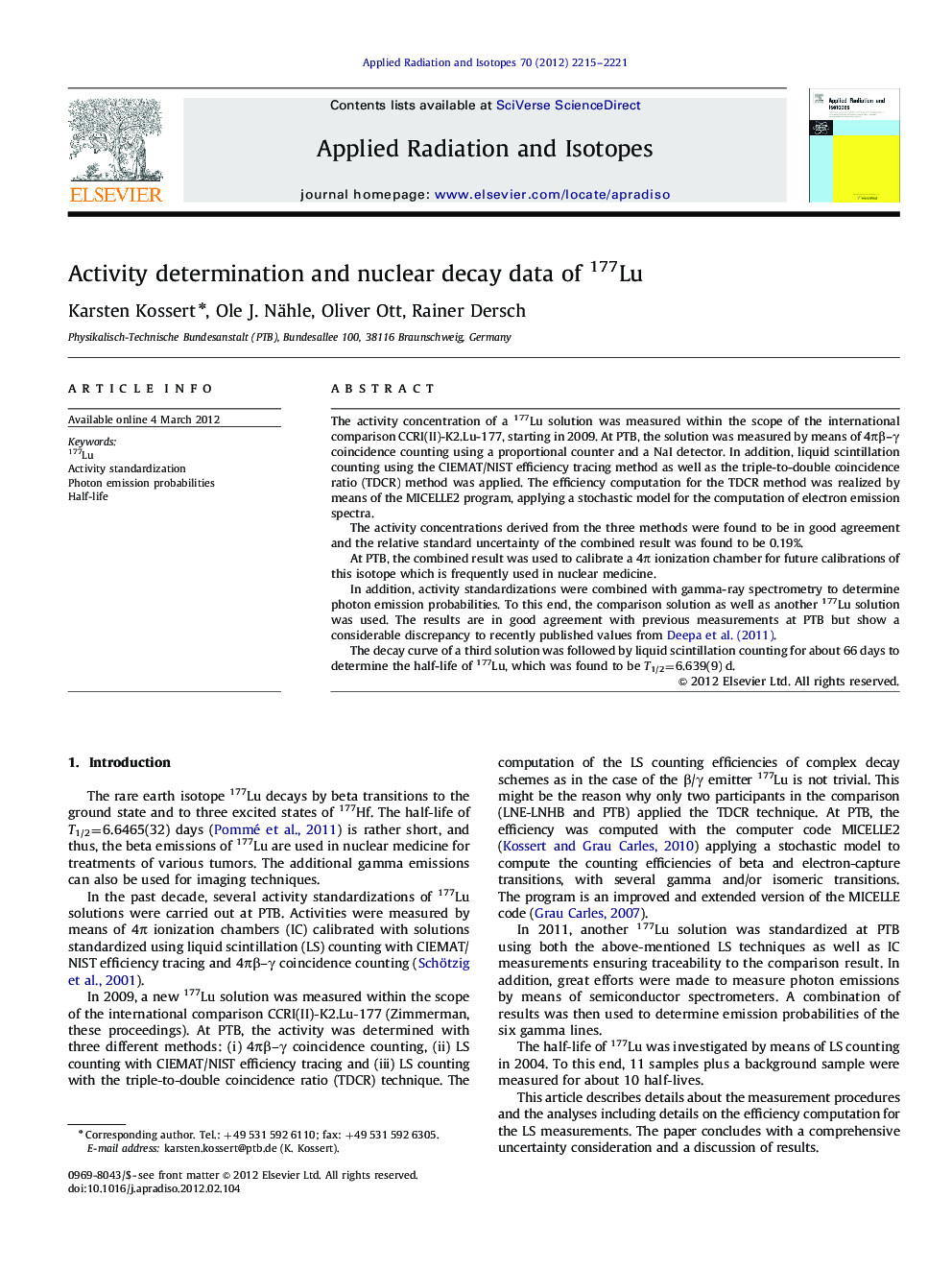| Article ID | Journal | Published Year | Pages | File Type |
|---|---|---|---|---|
| 1879107 | Applied Radiation and Isotopes | 2012 | 7 Pages |
The activity concentration of a 177Lu solution was measured within the scope of the international comparison CCRI(II)-K2.Lu-177, starting in 2009. At PTB, the solution was measured by means of 4πβ–γ coincidence counting using a proportional counter and a NaI detector. In addition, liquid scintillation counting using the CIEMAT/NIST efficiency tracing method as well as the triple-to-double coincidence ratio (TDCR) method was applied. The efficiency computation for the TDCR method was realized by means of the MICELLE2 program, applying a stochastic model for the computation of electron emission spectra.The activity concentrations derived from the three methods were found to be in good agreement and the relative standard uncertainty of the combined result was found to be 0.19%.At PTB, the combined result was used to calibrate a 4π ionization chamber for future calibrations of this isotope which is frequently used in nuclear medicine.In addition, activity standardizations were combined with gamma-ray spectrometry to determine photon emission probabilities. To this end, the comparison solution as well as another 177Lu solution was used. The results are in good agreement with previous measurements at PTB but show a considerable discrepancy to recently published values from Deepa et al. (2011).The decay curve of a third solution was followed by liquid scintillation counting for about 66 days to determine the half-life of 177Lu, which was found to be T1/2=6.639(9) d.
► Activity concentrations of 177Lu solutions have been measured by several methods. ► Coincidence counting, the CIEMAT/NIST method and the TDCR method have been applied. ► The results were also used within the scope of an international comparison. ► In addition, photon emission probabilities and the half-life of 177Lu have been measured.
